8 Ways To Encourage Soft Skills (Core Dispositions) in our Children

In this post on soft skills I asked the question: What do we want our kids to be like? When it comes down to it, we parents want more than exemplary test scores and gold stars on papers, we want what will last. We want the kinds of character traits our kids will rely on to pull them through when we aren’t around, like optimism or grit. We want something at the core of who they are that will help them make the right decision when nobody’s looking: integrity. We want them to try one more time when they are ready to give up: perseverance. We want that irreplaceable feeling inside that grins from ear to ear when they accomplish something awesome without taking shortcuts or using cheat codes that only comes from intrinsic motivation and pride in their own efforts. We want them to see through the eyes of others and help those in need, feeling compassion and empathy.
It’s so fluffy!
Parents and teachers alike agree this kind of personal growth and development matters, but these qualities still seem intangible, subjective, and hard to see and measure. I mean, what does (insert soft skill) look like? The very term ‘soft skills’ sounds pretty fluffy and doesn’t command the sense of importance it deserves. So how might we, as parents, highlight and nurture these core dispositions in our children?
Here are 8 ways to Encourage Soft Skills (Core Dispositions) in Our Children:
1. Give Clear & Authentic Feedback
In lieu of being a “praise junkie” spouting a steady stream of “good job” and “you’re so smart”, provide clear, authentic feedback to your children. Ask yourself what, specifically, was it about her performance or behavior that was so notable? Highlight the effort by saying, “you worked hard”.
Carol Dweck, author of Mindset: The New Psychology of Success says it best, “Becoming is better than being”.
2. Notice & Name Qualities You Want To Encourage
Core dispositions, like empathy, can be hard to quantify and challenging for our children to wrap their minds around when they are treated like vocabulary words to memorize and magically embody.
When parents and children intentionally and consistently notice and name what these qualities look like, sound like, act like in daily life we help both our children and ourselves nurture and model what we hope to see.
Invite your children into the conversation about what core dispositions you both hope to develop. Then we must have eyes for empathy, perseverance, positive attitudes and that which we are striving for. Characters in the story we are reading, or in the movie we are watching, small moments of joy, or intense moments of hardship, can each play a role in shaping who our children become.
Try this sentence stem: The way you _____ shows you _____.
“The way you went after the ball even after you tripped shows you persevere.”
Or this one: Empathy looks like….
“Empathy looks like when Peeta burned the bread so he could throw it to Katniss even though he knew he would get in trouble.”
3. Ask What They Think vs. Quizzing About What They “Know”
What message do we, as parents, send when we only applaud what our kids already know? How do they get to that knowing anyway if they have no safe place to try and think and guess and experiment?
Let’s show our kids it is their thinking we value. Simple patterns of conversation or Thinking Routines such as, “What makes you say that?” provide opportunities for us to go beyond facts and mere recall with our children and get to what is really going on in their minds.
I want my kiddo to be a thinker not just an honors student (someone remind me I said this when he gets to high school).
4. Serve Others
“The cost of leadership is self-interest,” says author Simon Sinek in his book, Leaders Eat Last. Leadership is giving of your time and energy and expecting nothing in return.
Sinek goes on to explain the biological reasons why helping others makes humans “happy” (spoiler alert: oxytocin). And guess what? The more you do the more you want to do.
How do we nurture unselfish hearts in our children and build leaders? Serve others, especially when it isn’t convenient. It is going to cost us something. Remember that is the point.
5. Provide Time & Space to Explore
We are over scheduled and so are our children.
Even supposed playtime is now a scheduled appointment, the playdate, filled with highly-structured activities and materials. Don’t believe me? Google “Pinterest Playdate Crafts.”
How did you spend your childhood summer days? Remember cloud watching, building forts, rollerblading, fording rivers, and letting your imagination shine a light on your next move? Turns out our modern kiddos thrive with time and space to explore too, preferably without an iCal reminder or predetermined topics for play.
Carrie Contey, cofounder of Slow Family Living, says it this way: children need to have “moments of doing and moments of being” in order to have a balanced life and not wear out.
#savoringtheseason is my little reminder to be present, positive, and grateful with my own kiddo.
6. Embrace Messiness & Non-Conformity
We want to build thinkers and creators and doers. We want kids to think for themselves, experiment, and discover how this big ole world works. Then we buy the prepackaged holiday craft that shows our children have the fine motor skills to put the turkey together, but little else.
In her Plea for Boyhood, Celeste Brinson, wonders “if rough and unrestricted [and messy] play is simply inconvenient for adults.” Under the guise of safety we say that activity is a no go by default even though we know learning and growing is messy.
How might we provide opportunities for our children to dive in with both hands and make a mess?
7. Pause… You Don’t Always Have to Save the Day
How can our kids become “self-starters” if we are always starting for them? If we always swoop in and shield them from adversity what happens on the day we aren’t around? Learned helplessness is just that: a learned behavior.
A mother of three teenage boys recently shared that her eldest missed his college application deadlines. My first inclination was, “oh no,” followed by a judgy mom moment, “how could you let that happen?” She went on to share about how he spent a semester teaching children in South America to play lacrosse and was forever changed by experience. He came back more empathetic, disciplined, and grateful.
He went on to start college, one semester late, with experiences and qualities that will likely impact the rest of his life.
In her book, Daring Greatly, Dr. Brené Brown’s book writes (speaking to her children), “I will want to take away your pain, but instead I will sit with you and teach you how to feel it.”
As parents, let’s pause when we see our children in the midst of adversity. Is it time to swoop in and offer our help? Or will walking through this experience build strength and capacity for our children to not just bear the load but thrive under it?
8. Admit You Don’t Know it All and Never Will
At some point that parental superhero thing is going to come crashing down. I remember vividly the day my parents’ imperfections came front-and-center as my father ended their 25-year marriage.
Instead of pretending we know it all and we are perfect (which is exhausting anyway) why don’t we admit it when we don’t know something or aren’t sure how to navigate a situation with our kids.
“I am concerned about the time you are spending ______ because _____. Can we come up with a solution, together, for how we might find a balance?”
“I am not sure. How could we find out?”
Oh. And “I’m sorry. I made a mistake” goes a long way too.
The Hard Road to Soft Skills
Two roads diverged in the woods and I took the one less traveled. And it hurt man!
-Robert Frost & Kid President
If it was easy everyone would do it.
“If parents want to give their children a gift, the best thing they can do is to teach their children to love challenges, be intrigued by mistakes, enjoy effort, and keep on learning. That way, their children don’t have to be slaves of praise. They will have a lifelong way to build and repair their own confidence.” ― Carol S. Dweck
So may we adopt Tracy Grant’s New Year’s Resolution this school year and try, “just a little less hovering, a little less worrying, a little less intervening,” We may just end up with the fruits of our intentionality; children who embody the core dispositions we planned and fought for.
This blog is part of our Smart Parents blog series and book, Smart Parents: Parenting for Powerful Learning in partnership with The Nellie Mae Education Foundation. For more information, please see our Smart Parents: Parenting for Powerful Learning page and other blogs in the series:






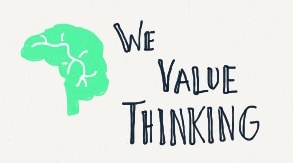
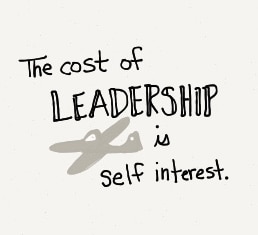


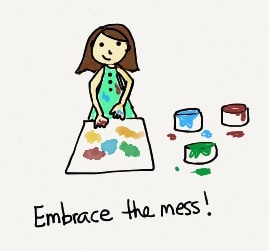

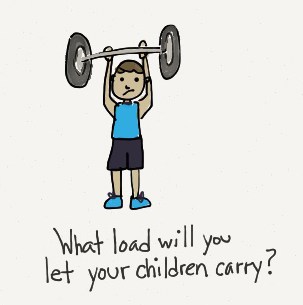
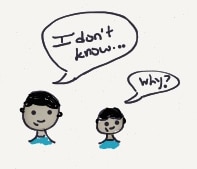



0 Comments
Leave a Comment
Your email address will not be published. All fields are required.